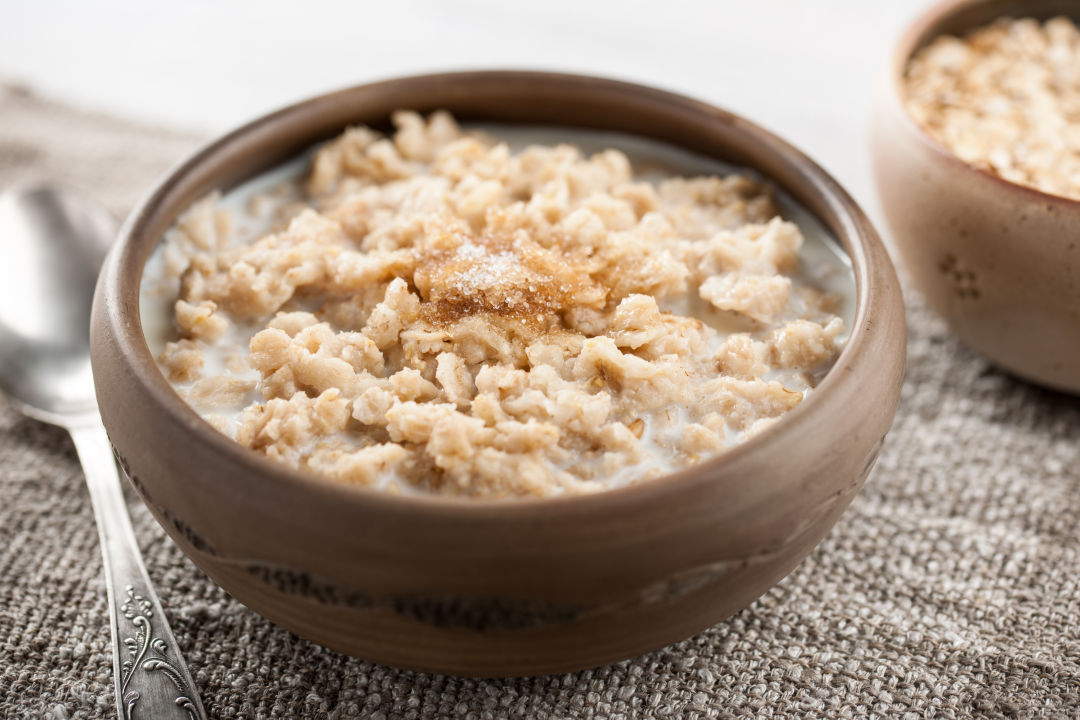Why Breasts Are like a Bowl of Oatmeal

"I always tell people that breasts are like a bowl of oatmeal,” says Dr. Robin Barrett of Legacy Good Samaritan Hospital.
Image: Shutterstock
“They flattened my bosoms into pancakes!” my grandmother divulged to me after her first mammogram, my eyes growing wide. But although mammograms aren’t exactly relaxing, the brief discomfort is well worth the potentially life-saving results. We already went over why you need to get a pap smear; now, let’s talk breasts.
Breast cancer is the most common cancer among American women, and early detection has a major impact on survival rates. Mammograms are currently our best tool in breast cancer screening, and guidelines change often, so we sat down with Dr. Robin Barrett, MD, Chair of Obstetrics and Gynecology at Legacy Good Samaritan Hospital, to discuss the most recent recommendations for breast cancer prevention.
The Mammogram
Mammograms flatten breast tissue to facilitate a clear x-ray picture of breast tissue, which can reveal abnormalities and potentially cancerous growths. According to Dr. Barrett, people under the age of 30 are at a lower risk of developing breast cancer. She recommends that cis women over 40 have mammograms every year to look for abnormalities in breast tissue and potentially cancerous growths.
What do genetics have to do with it?
A family history of the disease, hormonal birth control, and smoking all raise your risk of developing breast cancer. “We discuss family history and genetics to get a better sense of a person’s risk,” Dr. Barrett says. “Most of us who work in the women’s healthcare field are seeing an increased risk of premenopausal breast cancer.”
While Dr. Barrett has theories about the upswing (BPA in cans, microwaved Styrofoam), she claims that genetic testing is the next frontier in cancer treatment. “We are on the cusp of doing more genetic breast cancer screening because the coverage has gotten better and the price point is getting lower,” says Dr. Barrett. “We recommend doing BRCA testing and other genetic testing.”
The Annual Exam
Annual breast exams and even self-screening can play a role in early detection. “I always tell people that breasts are like a bowl of oatmeal,” Dr. Barrett says. “Trying to find an M&M in a bowl of oatmeal will feel different, and some things we can’t even feel. Often things are benign, and people will come into the office and we will take the next step.”
Dr. Barrett cautions that pap smears and yearly mammograms do not take the place of a regular annual exam. During an annual wellness exam, your gynecologist will perform a pelvic and breast exam to look for abnormalities like polyps, fibroids, or cysts.
Remember, all preventative measures and yearly wellness exams are covered under the Affordable Care Act—including annual exams and mammograms. 1 in 8 cis women will develop invasive breast cancer at some point in their lives, so talk to your healthcare provider about your options—screening is our best course of action against this deadly disease.




